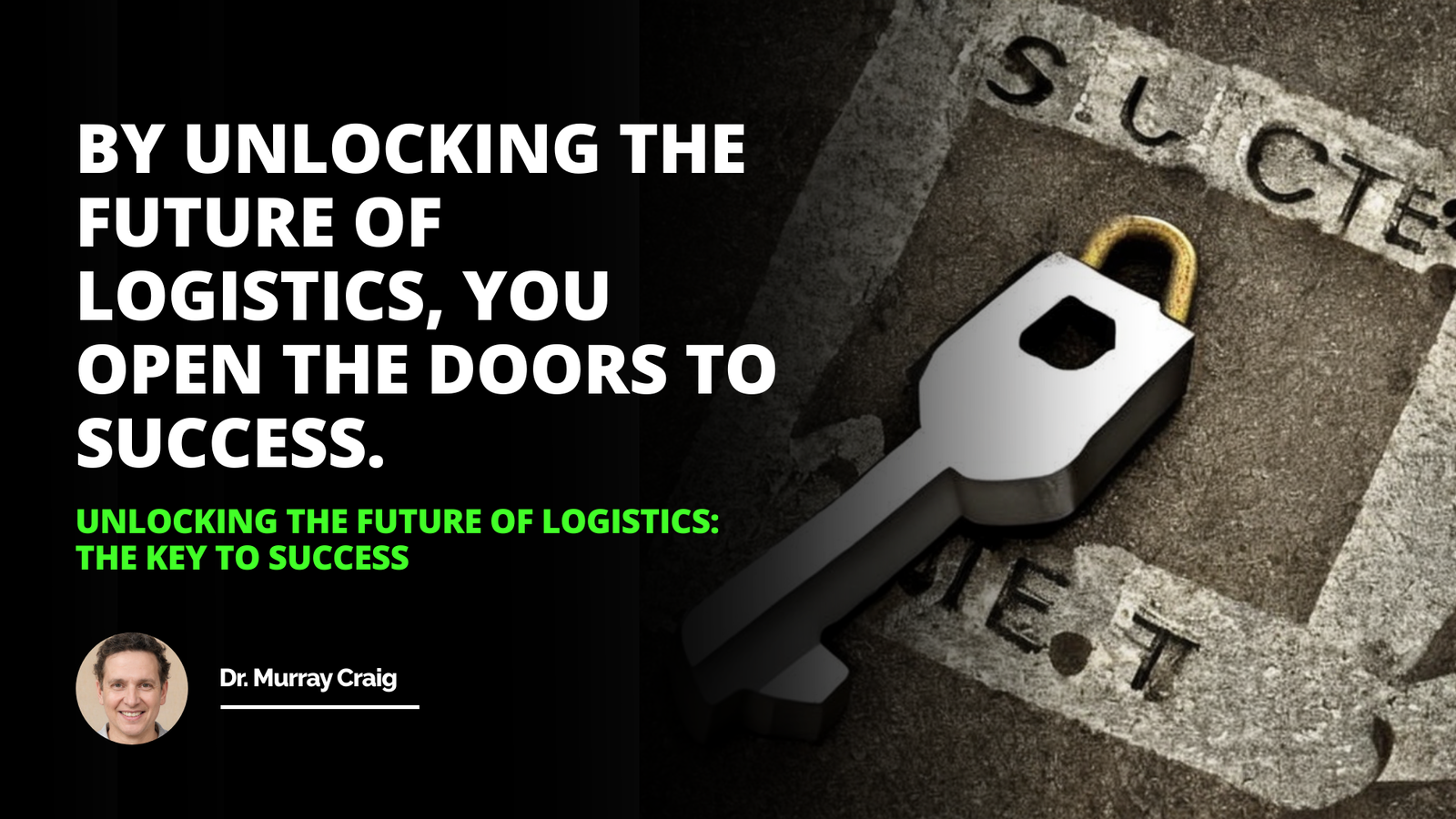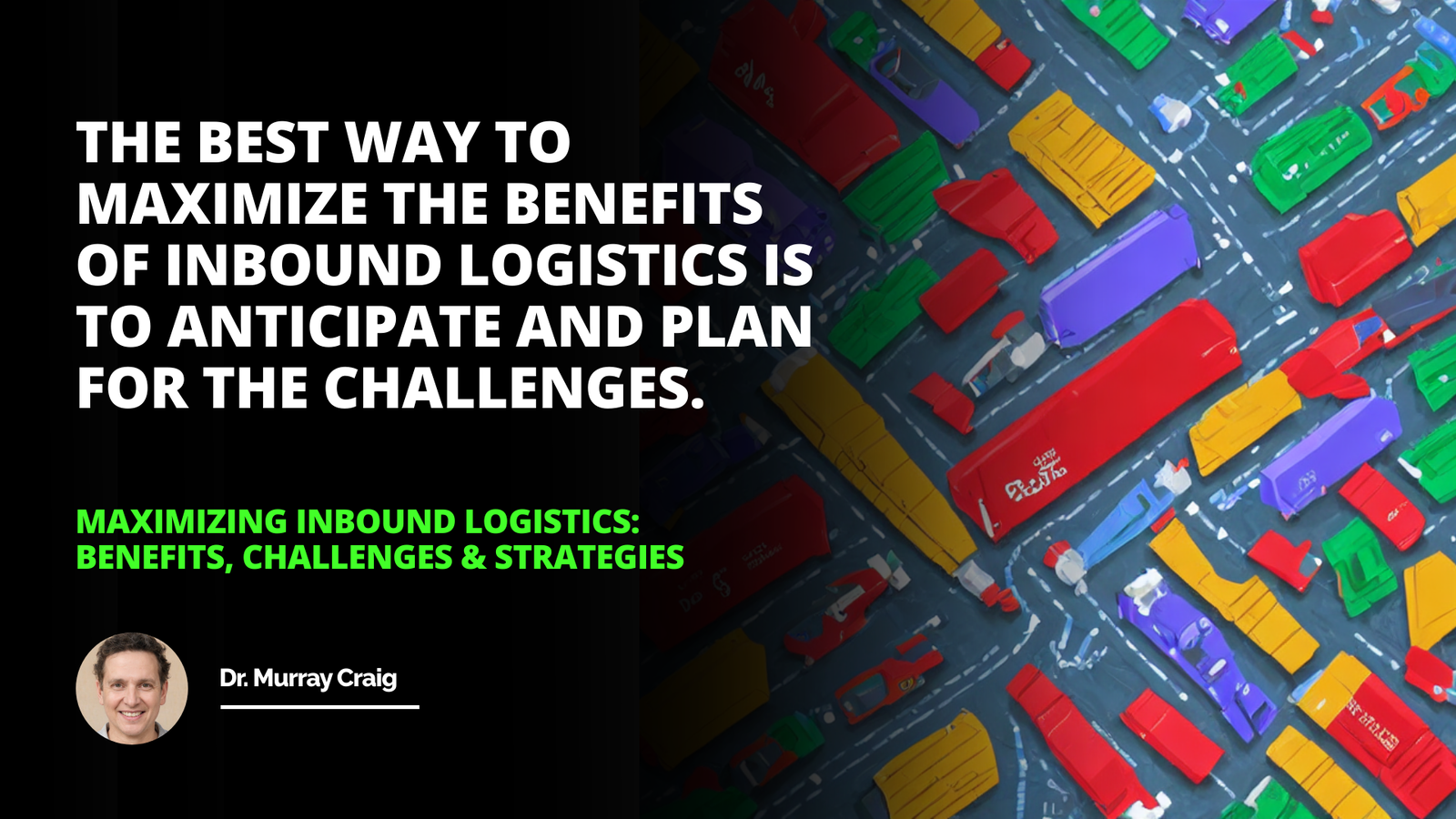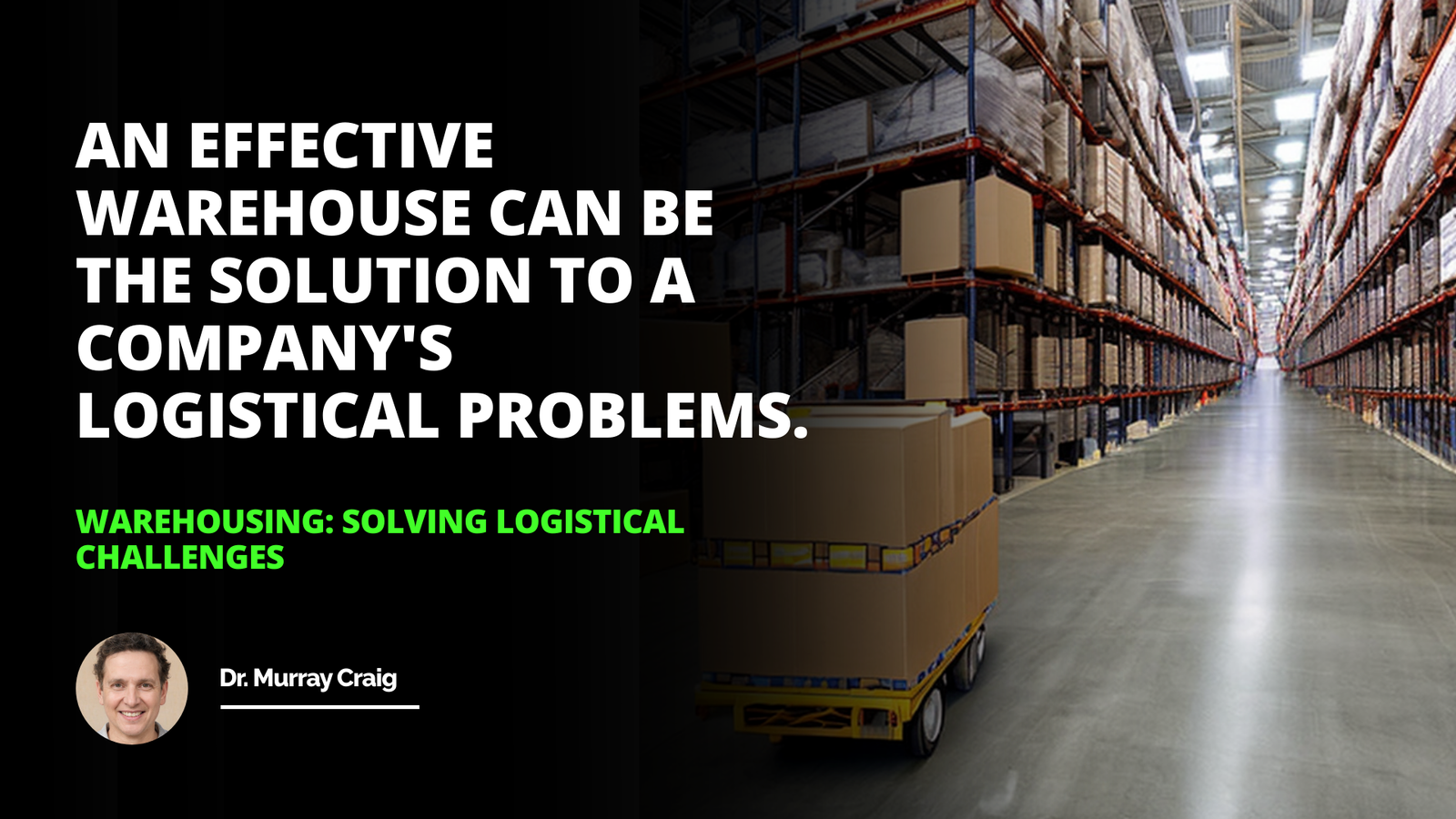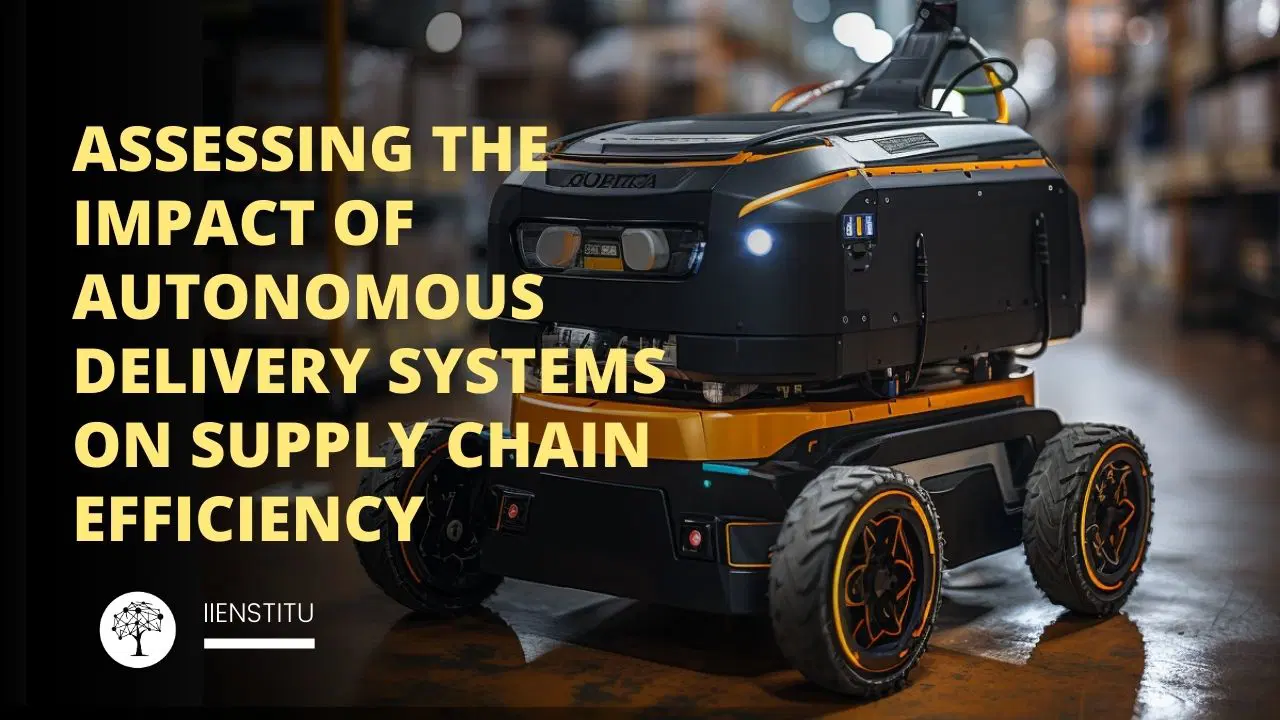
Autonomous delivery systems represent a revolutionary step in the evolution of logistics and supply chains, eliciting great interest across various industry sectors. Incorporating elements of cutting-edge technology such as robotics, artificial intelligence, and advanced navigational systems, these systems promise to enhance the efficiency of delivery mechanisms significantly.
This article endeavors to dissect the role of autonomous delivery in contemporary supply chain management, exploring the technologies and applications, discerning the potential benefits and challenges, and contemplating the future trajectory of this innovative domain.
The Concept of Autonomous Delivery Systems
İmportance Of Quick Response İn Today's Business World Methods Benefits
Logistics For Successful Supply Chain Management Overview Benefits Challenges Strategies
Autonomous delivery systems, by definition, refer to the leveraging of unmanned vehicles and systems for the purpose of delivering goods and services without human intervention. Rooted in technological advances, autonomous delivery devices navigate through an environment in a self-guided manner, detecting and overcoming obstacles to reach their intended destinations.
Definition and Explanation: The history of autonomous delivery systems dates back to the early experiments with unmanned vehicles and drones, but only in recent years has the technology matured sufficiently to be considered for widespread use in logistics. These systems range from airborne drones to ground-based robots and self-driving trucks, each positioned to disrupt traditional delivery models.
Robotics: In the context of logistics management courses, robotics is taught as a cornerstone technology for autonomous systems. Robotics are implemented in autonomous delivery to manage and execute tasks like sorting, packing, and transportation. They are engineered to perform repetitive tasks with precision and at a speed unattainable by human workers. With the introduction of advanced sensors and actuators, robots have become more adaptable and capable of complex navigation and package handling.
Artificial Intelligence and Machine Learning: Artificial intelligence (AI) and machine learning (ML) serve as the brains of autonomous delivery systems. These technologies allow the systems to make decisions, learn from past experiences, and adapt to the logistics environment. AI algorithms process vast amounts of data to optimize delivery routes, while ML enables the system to improve over time, increasing efficiency and reducing the likelihood of errors in delivery.
GPS and Navigation Systems: For autonomous delivery systems, GPS and navigation technologies are critical. They allow devices to determine their exact location and chart a course to their final destination while considering real-time traffic conditions and obstacles. Robust navigation systems guarantee that deliveries are not only accurate but also adhere to the shortest and most energy-efficient paths.
Types of Autonomous Delivery Systems
Regardless of the platform, all types of autonomous delivery systems strive to augment supply chain efficiency, each catering to specific operational needs and environments.
Ground-Based Delivery Robots: Ground-based delivery robots embody the synergy between robotics and delivery services on urban sidewalks and streets. Companies like Starship Technologies have been at the forefront, deploying these robots to deliver food, packages, and mail in cities worldwide. With their ability to maneuver around pedestrians and traffic autonomously, these robots highlight a practical solution for "last-mile" delivery challenges.
Autonomous Drones: Autonomous drones, exemplified by projects such as Amazon's Prime Air, represent the aerial counterpart to ground-based systems. They have the potential to bypass road traffic altogether, offering swift delivery directly to customers' doorsteps. By decreasing delivery times and accessing areas difficult to reach by traditional methods, drones could redefine the standards of delivery speed and accessibility.
Self-Driving Delivery Vehicles: Self-driving delivery vehicles, such as those in development by Waymo and other automotive companies, are equipped to handle larger cargo loads and longer distances. These vehicles can navigate highways and urban environments, utilizing complex sensor suites and control algorithms. Their capacity for non-stop operation could drastically reduce delivery timeframes and associated labor costs.
Benefits and Challenges of Autonomous Delivery Systems
The implementation of autonomous delivery systems carries with it a spectrum of anticipated benefits as well as an array of challenges that need to be faced for successful integration into existing supply chains.
Cost Efficiency: One of the key advantages highlighted in certificate courses online pertains to cost efficiency. Autonomy in delivery systems reduces the need for human drivers and the associated labor costs. Furthermore, these systems can operate 24/7, increasing productivity and vehicle utilization rates. The optimization of delivery routes via AI reduces fuel consumption and, in turn, operational costs.
Speed and Timeliness: The incorporation of autonomous delivery systems can lead to dramatic improvements in delivery speed and punctuality. By functioning around-the-clock and avoiding disruptions typical in human-operated systems—such as breaks and shift changes—deliveries can be made faster and with higher consistency.
Reduced Human Error: Autonomous systems also promise a substantial reduction in human error, which is a significant contributor to logistical inefficiency. By relying on accurate and consistent robotic and AI operations, the potential for mistakes in the delivery process is greatly minimized, leading to a more reliable supply chain.
Legal and Regulatory Issues: Nevertheless, the path towards implementation is not devoid of obstacles. Legal and regulatory frameworks have yet to catch up with the pace of technological innovation in this space. Autonomous systems must navigate a complex web of traffic laws, aviation rules, and safety standards, which vary greatly by region and are still under development for these new technologies.
Technical Challenges: Technical limitations remain a significant challenge for autonomous delivery systems. Ensuring reliable performance in diverse weather conditions, preventing system malfunctions, and guaranteeing consistent connectivity for navigation and control are all areas demanding relentless innovation and rigorous testing.
Safety and Security Concerns: Safety and security concerns are paramount when discussing the wider adoption of autonomous delivery systems. Potential issues range from the physical security of the goods transported to the cyber security of the control systems. Ensuring these systems are safeguarded against accidents and malicious attacks is a critical consideration for all stakeholders involved.
Case Studies of Autonomous Delivery Systems
In practice, autonomous delivery systems are not just theoretical concepts but are already making tangible impacts as various companies pioneer their use.
Amazon's Prime Air: A significant example is Amazon's Prime Air, which aims to use drones to deliver packages within 30 minutes of order placement. While still in its developmental stages, Prime Air has the potential to revolutionize expectations for e-commerce delivery times and set new standards for competitors.
Google's Wing: In a similar vein, Google's Wing has also been experimenting with drone delivery for items like food and medicine. This project has not only showcased the feasibility of such deliveries but also demonstrated the capability to cater to urgent needs in healthcare and other critical sectors.
Starship Technologies’ delivery robots: On the ground, Starship Technologies has been rolling out its fleet of six-wheeled delivery robots globally. These robots have already been operating in several cities, effectively reducing street congestion and enabling fast and environmentally friendly delivery options that resonate with modern consumers.
The Future of Autonomous Delivery Systems
As we look towards the future, the integration of autonomous delivery systems into the supply chain holds vast potential for economic and societal transformation.
Predicting future advancements: Advancements are anticipated in various areas, including improved sensor technologies, more robust AI algorithms, and broader regulatory acceptance. These innovations will enable autonomous delivery systems to become more reliable, responsive, and seamless in their integration with human activities.
Potential impact on jobs and the economy: Beyond the direct impact on supply chain efficiency, autonomous delivery systems may significantly alter the job landscape and have profound economic implications. While they may displace certain types of jobs, these systems could also create new opportunities in tech, maintenance, and system management, ultimately reshaping the economy around new forms of logistics and delivery processes.
In assessing the evolution of autonomous delivery systems, it is evident that their integration into supply chains around the world has the potential to increase efficiency and reshape the landscape of logistics. Despite the complex obstacles that lie ahead, the continued development and adoption of these systems promise to set new benchmarks for the speed, reliability, and cost-effectiveness of deliveries. As businesses and consumers alike adapt to these changes, autonomous delivery may well become a standard aspect of our collective future.
Frequently Asked Questions
What are the potential benefits and challenges of implementing autonomous delivery systems into current supply chain networks?
Autonomous Delivery Systems in Supply Chains
Benefits of Autonomous Delivery Systems
Increased Efficiency stands out as the primary advantage. Autonomous systems reduce human error. They streamline logistics operations. Real-time data and machine learning optimize routes. This optimizes fuel use and time.
Scalability proves crucial for growth. These systems adapt to varying demands easily. They can scale up or down as needed. Greater flexibility helps meet consumer demands.
Cost savings emerge over time. Initially, investment seems high. Yet, reduced labor and operational costs pay off. Maintenance costs fall as technology advances.
Sustainability grows in importance. Autonomous vehicles often use electricity. This cuts down on emissions. It aligns supply chains with green initiatives.
Challenges of Autonomous Delivery Systems
Technology Integration presents challenges. Current systems may not support new technology. Upgrades require time and investment. Compatibility issues may arise.
Regulatory hurdles create uncertainty. Autonomous technology lacks full legal support. Laws vary by region and change often. This can delay implementation.
Cybersecurity risks increase with technology. Autonomous systems rely on data connectivity. This exposes them to potential cyber-attacks. Companies must invest in strong cybersecurity defenses.
Labor concerns come to the forefront. Automation can lead to job loss. This creates resistance among the workforce. Retraining and transitioning is necessary.
Conclusion
Autonomous delivery systems promise efficiency, scalability, and sustainability. Yet, they bring challenges in integration, regulation, cybersecurity, and labor dynamics. Balancing these benefits and challenges is key to a successful implementation. Companies must navigate this landscape carefully. Thoughtful planning and execution make the future of autonomous deliveries bright.
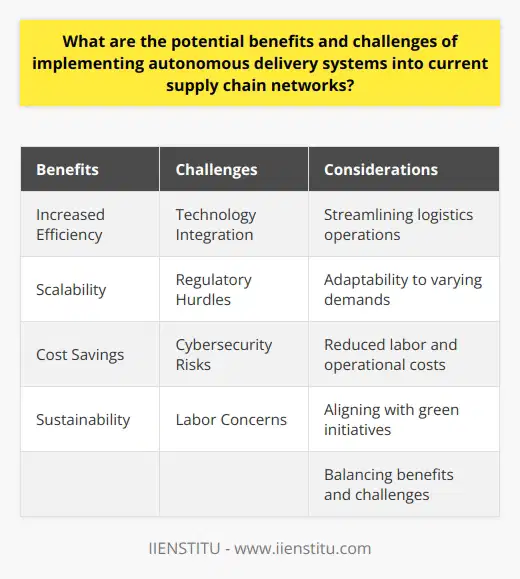
How would autonomous delivery systems affect cost-efficiency, delivery speed, and reliability in supply chains?
Autonomous Delivery Systems and Supply Chain Optimization
Cost-Efficiency
Autonomous delivery systems redefine logistics. Autonomy promises lower overheads. Fewer human workers mean reduced labor costs. Machines don't need breaks or benefits. This boosts cost-efficiency. Over time, investment in such technology pays off. Maintenance expenses can offset some savings. However, advanced systems often outlast traditional options. They operate with remarkable energy efficiency. This further diminishes operating costs.
Delivery Speed
Speed in delivery sets companies apart. Autonomous systems work tirelessly. They ensure uninterrupted flow of goods. No schedule constraints limit their operation. Traffic-optimized routing comes standard. This reduces transit times. Fewer human errors mean fewer delays. Drones and driverless vehicles navigate swiftly. They sometimes employ dedicated lanes. This avoids congestion.
Reliability
Autonomy enhances supply chain resilience. Machines follow precise algorithms. They reduce the chance of mistakes. Consistency in performance emerges. Weather and other variables may challenge systems. But technology constantly adapts. Diagnostic tools predict failures. They facilitate proactive repairs. Autonomous vehicles reroute around obstacles. This minimizes disruptions extensively.
Impacts on the Supply Chain
Supply chains evolve with technology. Autonomous systems bring radical changes. They reshape traditional models. Efficiency, speed, and reliability grow. This aligns with customer demands. It enables more robust competition. The replication of simple and complex tasks. Redefined workflows accompany these innovations. Supply chain actors must adapt. They will upgrade skills and strategies.
Overall, autonomous delivery forces a shift. Cost-benefits incentivize its adoption. Speed gains create market advantages. Improved reliability fosters trust. All these enrich the supply chain. They signal a bright future for logistics. Adaptation may prove challenging. But potential rewards justify the effort. These changes come neither easily nor quickly. Yet, their trajectory seems inevitable.
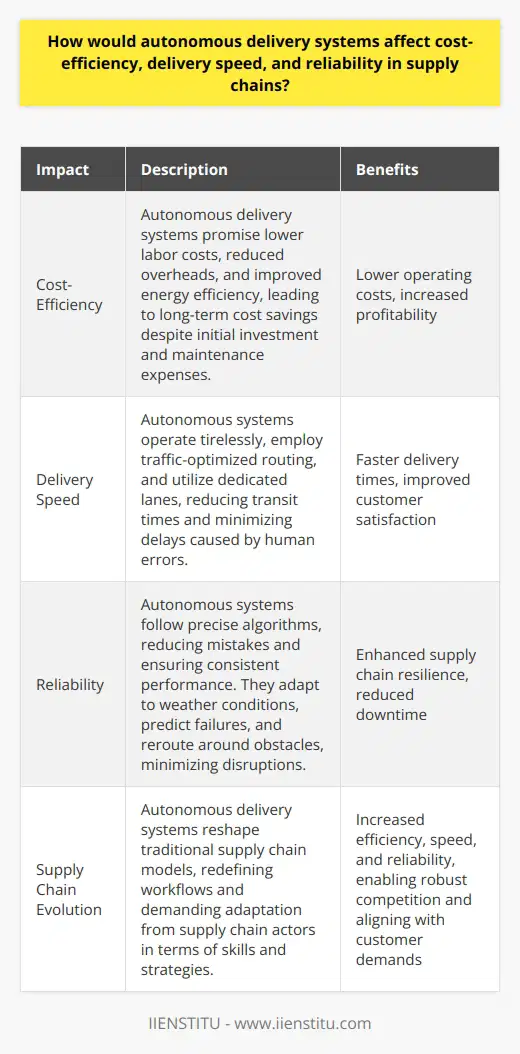
In what ways can autonomous delivery systems be optimally integrated into existing supply chains to minimize disruption and maximize efficiency?
Autonomous Delivery Systems: Integration into Supply Chains
Understand Existing Supply Chain Dynamics
Supply chains involve complex operations. Identifying current bottlenecks is crucial. Stakeholders must map out existing workflows. Understand every step and its challenges. Only then can one integrate new technologies.
Start Small with Pilots
Test with pilot programs first.
Implement autonomous systems on a small scale. Monitor their performance. Make necessary adjustments. Ensure they complement human labor, not replace it. Gradual implementation leads to less disruption.
Emphasize Communication
Clear communication is key.
All parties need to understand the changes. Training sessions are essential. Sharing real-time data is fundamental. It establishes trust and transparency. Workers anticipate and adapt to system updates.
Prioritize Compatibility
Systems must work with the old technology. Compatibility minimizes the need for overhauls. It ensures smoother transitions. Autonomous solutions should be adaptable. They function within established infrastructures.
Ensure Regulatory Compliance
Stay ahead with legal requirements. Policies shape technology integration. Compliance ensures uninterrupted operation. Legal breaches lead to delays and fines. Thus, regular legal reviews are necessary.
Foster Collaborative Ecosystems
Create alliances with tech providers. Collaborate across industry lines. Such relationships spur innovation. They allow faster resolution of technical issues. It fosters a supportive network for implementation.
Focus on Scalability
Plan for future growth. Scalable solutions adapt to increased demand. They avoid future system overhauls. Choose flexibility over rigid systems. This approach sustains long-term efficiency.
Utilize Data-Driven Decision Making
Data analysis drives improvements.
Data informs on system effectiveness. Patterns detected guide adjustments. Decisions based on data lead to better outcomes. They refine the delivery process. This maximizes efficiency over time.
Address Security Concerns
Security cannot be an afterthought. Autonomous systems require robust cybersecurity. Safeguard against hacking and data breaches. Ensure physical security of delivery vehicles. Secure solutions win stakeholder trust.
Implement Continuous Improvement
The market constantly evolves. New technologies emerge. Customer demands shift. Continuous improvement keeps supply chains competitive. It accommo

